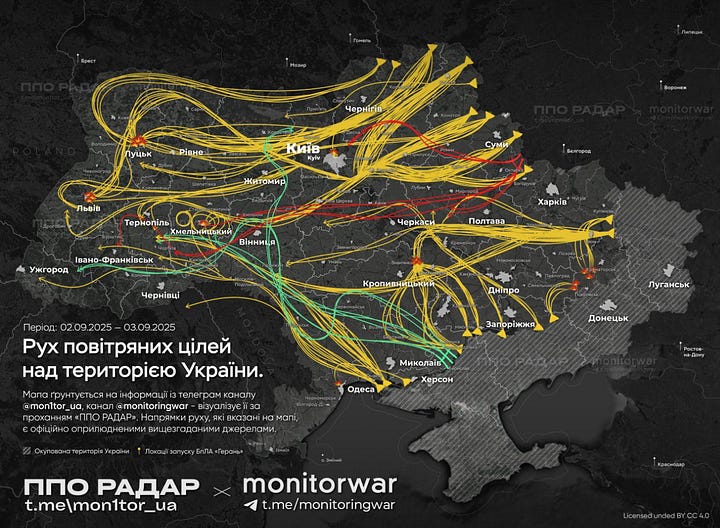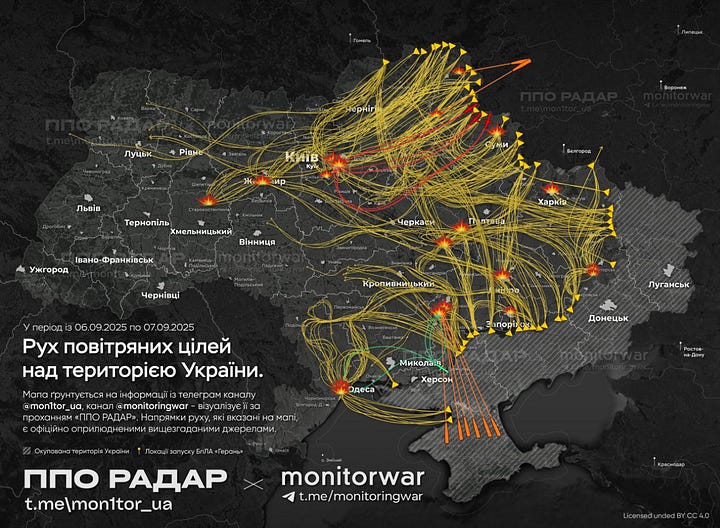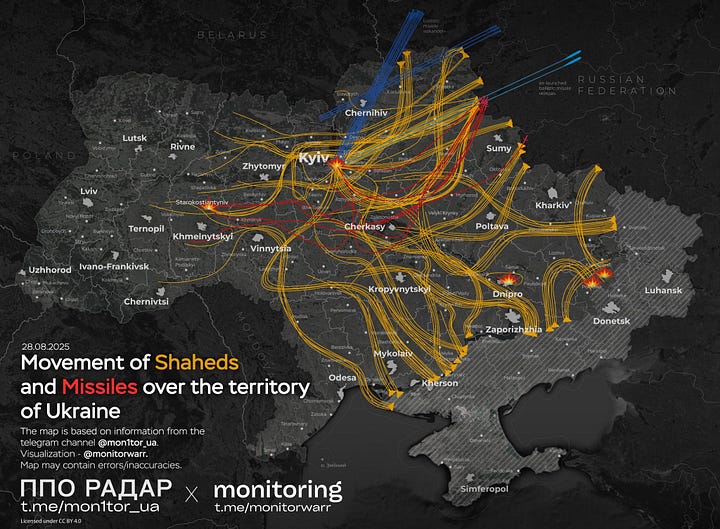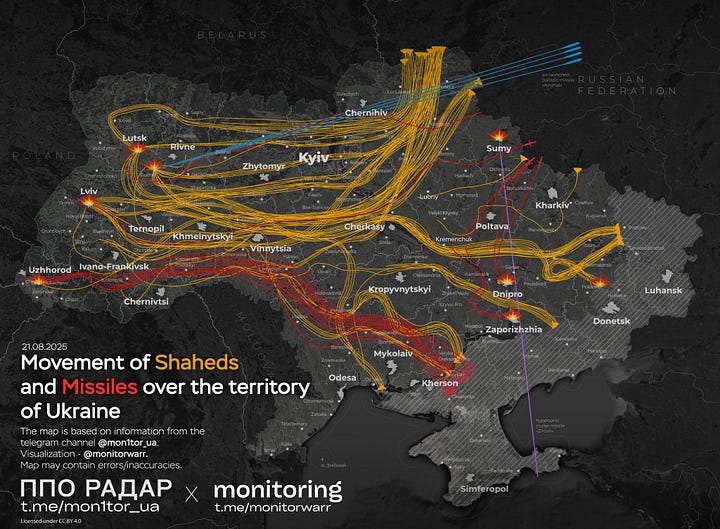Reports of Russian Propeller-Driven Fixed-Wing Drones In Polish Airspace Place Spotlight On Porous State Of Ukrainian Air Defences
🇧🇾 🇵🇱 🇷🇺 🇺🇦
Note: The following text was originally posted on my X/Twitter account.
Reports of Russian propeller-driven strike drones heading toward Poland serve as a reminder of how porous Ukraine's air defences remain. The inexpensive approaches to rear area short-range low-altitude air defecce that Ukraine has pursued allow it to secure specific sectors at a fairly low cost, not secure the entirety of its vast airspace. If Ukraine's (fully alerted, mobilized, and heavily reinforced as a result of foreign largesse) air defences were not so porous, the attached (Ukrainian) unofficial maps would not feature so many Shahed-136/Geran-2/Garpiya flight paths in western Ukraine.




Much of the (impressive) performance of Ukrainian air defences against Shahed-136/Geran-2/Garpiya propeller-driven strike drones and similar kinematically non-complex aerial threats can be explained by Russia's unimaginative and inept approach to targeting and its heavy reliance on the Shahed-136/Geran-2/Garpiya as an ersatz cruise missile surrogate.
Background:
These reported—as yet unconfirmed by official sources—incidents are happening in the lead up to the joint Belarus-Russia Zapad-2025 ("west 2025") military exercise in Belarus. Zapad-2025 may provide the backdrop for the formal unveiling of Russia's new Oreshnik ballistic missile, which is squarely aimed at NATO even though it has, to date, been employed once against Ukraine. Ukrainian officials have in the distant past voiced concern that Russia may seek to reopen the northern front via the Ukraine-Belarus border. While Russian forces engaged in combat operations against Ukraine withdrew from Belarus in 2022, Russia continued to use Belarusian airspace for air and missile strikes against Ukraine. Ukrainian reports suggest that this practice ended a long time ago.
Update:
The Polish military is currently characterizing this incident as a spillover from Russian propeller-driven strike drone launches against Ukraine, which are now an everyday occurrence (there is, however, considerable variance in the numbers launched per day). The fear among the residents of eastern Poland and the economic disruption brought about the the closure of multiple major Polish airports notwithstanding, this incident is likely to be looked back on as a useful opportunity to test the state of Polish—and NATO more generally—air defence capabilities against a still fairly new and both qualitatively and quantitatively distinct type of aerial threat that is unlikely to go away.
Much of the (impressive) performance of Ukrainian air defences against Shahed-136/Geran-2/Garpiya propeller-driven strike drones and similar kinematically non-complex aerial threats can be explained by Russia's unimaginative and inept approach to targeting and its heavy reliance on the Shahed-136/Geran-2/Garpiya as an ersatz cruise missile surrogate. Poland and NATO are likely to encounter a qualitatively and quantitatively enhanced propeller-driven strike drone threat from Russia—and perhaps Belarus—going forward.

